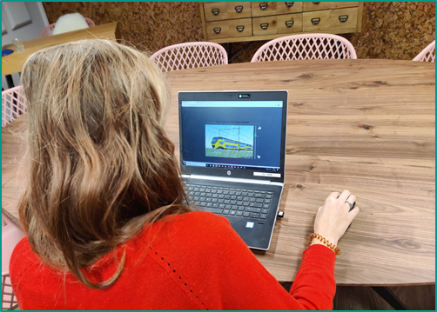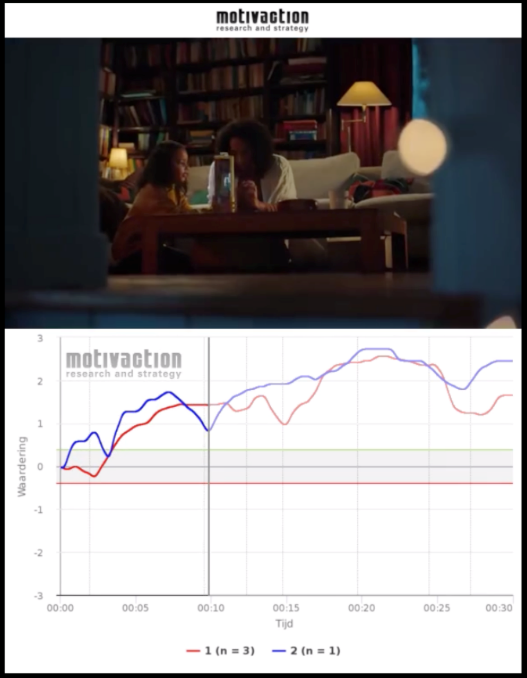Sponsored content
One cannot imagine our lives without digitality today. Within certain areas of research, however, the presence of digital devices can often still be seen as a distraction. The current COVID-19 crisis has rapidly shown us that we can no longer keep up the distinction between face-to-face and digital, and without innovation in market research, the industry will fall behind. That is why, instead of asking respondents to put away their laptop or smartphone during a project, we explicitly ask that they keep their devices at hand as they may be necessary for some new research methods or tools.

At Motivaction, the search for innovation has resulted in the InnovationLab project initiated already in 2018 by Margré Nijkamp and Sander Kluiters. Within this project, they are continually looking for new tools and possibilities in qualitative market research sector. We speak to both of them to find out more about these initiatives.
Why the InnovationLab?
Margré: “As Motivaction we think it is important to look beyond traditional market research, and to consider the development of new methods and technologies with which we can provide the best insights for companies and organisations. We do this by paying attention to clients’ challenges with upcoming techniques and technologies, but also by looking at the changing preferences of respondents who participate in research.”
What sort of ideas originate within this concept?

Sander: “We are very excited about the rise of new digital solutions, but at the same time we are highly convinced that face-to-face research will continue to add value: sometimes there is nothing better than a conversation, in person, while drinking a cup of coffee together. Meanwhile, we also see that consumers get increasingly used to expressing their opinions, experiences or feelings though new tools like emojis and GIFs. The InnovationLab allows us to look for new ways to combine face-to-face and digital research methods. It gives us as researchers the opportunity to have a sit down with the consumer and helps the consumer to express their emotions or impressions through technology.
Margré: “That’s why we introduced VisualFocus in 2018, for example. Our tool that lets respondents in focus groups give their opinion through their smartphone. It makes for a more interactive, effective and fun focus group. Late last year we also launched adFlow tool, which unfortunately, was on hold for a while because of the corona pandemic. Luckily, as of June, the relaxation of Dutch corona measures made it possible to start conducting adFlow research again.”
Could you tell us more about adFlow?
Margré: “adFlow is a qualitative research tool that allows the respondent to indicate how much they appreciate an advertisement or a concept, with the help of a computer mouse or tracking pad. It provides an accurate and detailed insight into the impact and appreciation of the commercial or concept. Directly after receiving the scores from the respondent, we discuss these with them which then supplies the client with an even better idea of how consumers experience the different scenes and elements of their messaging.”


Sander: “The movements made with the computer mouse or tracking pad (up is a positive experience, down is a negative experience) are a reliable tool to reflect the consumer emotions throughout the commercial which are then visualised in an interactive chart. This, combined with a follow-up conversation, helps in obtaining a more detailed explanation of how the respondent experienced, understood and appreciated certain scenes and elements, and subsequently leads to necessary improvements and adjustments.”

How does adFlow differ from other types of concept- and pretesting?
Sander: “The big difference is the debrief with the respondent directly after they evaluated the commercial as it leads to in-depth insights into the positive and negative experiences of the respondent. In addition, it gives a more accurate picture of the effectiveness of the commercial concept. It also helps determine which specific elements create appreciation, or lack thereof. Does this specific fragment have a positive association? Does the payoff lead to successful messaging? What influence does the music have?”
Margré: “It is also just a lot of fun for the respondents to participate in this type of research. It’s an easy to use, intuitive tool for everyone. Even for the elderly, or people who struggle with digital tools. We recently did an adFlow study among people over seventy years old, who had no problems using it at all. And there is of course added value for the client. They can watch the research while it’s taking place, directly see the score of their commercial or concept and what its strong and weak points are. It gets clients involved and really brings the points of improvement to life for them, which in turn helps them increase the effectivity of their message”.
The continuing development of new ways to conduct research face-to-face, through digital tools or a combination of both, can help market researchers stay connected with their clients and respondents in the current landscape. It helps our industry turn potential distractions into possibilities, creates a fun and attention-grabbing experience for its respondents and improves the quality of output even further. By developing new tools, we can all take research to a higher level and provide worldwide actionable insights. Despite the trying times ahead.


